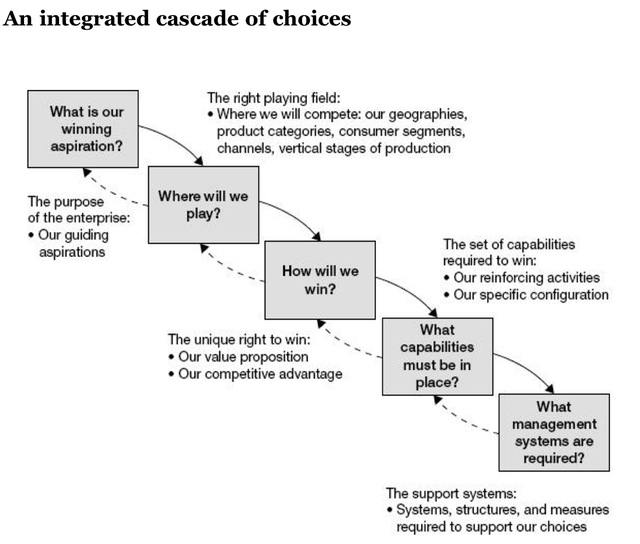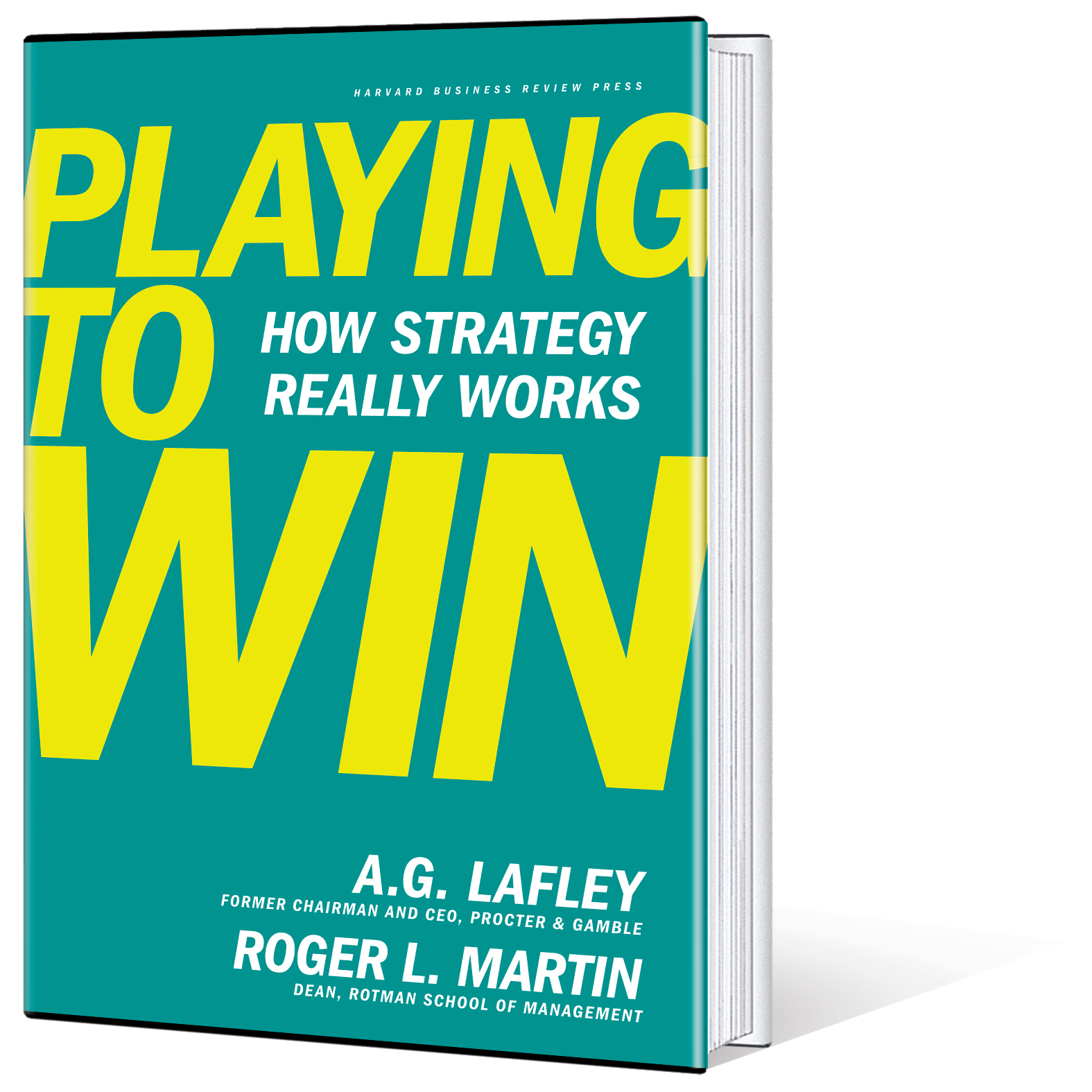Playing to Win: How Strategy Really Works for Cannabis Leaders
LOS ANGELES -The Cannabis industry is filled with ambitious operators, visionary founders, and well-funded enterprises. Yet despite enormous energy and investment, many companies still struggle to answer the most fundamental question in business: what is our strategy?
Too often, Cannabis leadership mistakes survival for strategy. But survival alone is not a winning aspiration. To move beyond firefighting and constant reaction, founders and executives must embrace frameworks that force tough decisions about where to play, how to win, and what to leave behind.
One of the clearest frameworks comes from Playing to Win: How Strategy Really Works, by A.G. Lafley, former CEO of Procter & Gamble, and Roger Martin, then dean of the Rotman School of Management. Based on Lafley’s transformation of P&G, the book offers a practical playbook for making the choices that allow companies to scale. Its lessons resonate deeply with Cannabis businesses today.
What Is Strategy, Really?
At its core, strategy is about choice. Not a lofty vision, not a budget plan, not the optimization of existing operations — but deliberate, integrated choices that define how an organization will win.
As Michael Porter argued in Competitive Strategy, sustainable advantage comes from “deliberately choosing a different set of activities to deliver unique value.” In other words, success is not about doing everything, but about deciding what not to do.
Lafley and Martin warn against the five most common mistakes leaders make when defining strategy:
-
Defining strategy as a vision.
-
Confusing strategy with a plan.
-
Believing long-term strategy is impossible.
-
Optimizing the status quo.
-
Copying best practices from others.
Each of these missteps is common in Cannabis. Companies expand into every market, chase the same product formats as competitors, or “follow best practices” without developing unique strengths. The result is sameness, inefficiency, and, ultimately, fragility.
The Strategic Choice Cascade
Lafley and Martin introduce the strategic choice cascade, a framework that organizes strategy into five interrelated decisions:
-
What is your winning aspiration?
The motivating purpose that defines what “winning” looks like. -
Where will you play?
The markets, channels, and categories in which the company chooses to compete. -
How will you win?
The approach that creates unique and sustainable value in the chosen space. -
What capabilities must be in place?
The assets, skills, and strengths required to win. -
What management systems are required?
The metrics, incentives, and processes that support and sustain the strategy. 
In large corporations like P&G, multiple nested cascades exist at different levels of the organization. Cannabis companies, though smaller, must still work through this cascade at both the corporate level and within individual product lines, retail operations, or state markets.
Applying the Cascade to Cannabis
Winning Aspirations
Many Cannabis operators set aspirations around survival — breaking even, staying compliant, or maintaining licenses. A winning aspiration goes further, expressing a bold and motivating vision. For example: to be the most trusted Cannabis wellness brand for seniors, or to deliver the lowest-cost, highest-quality flower in the Northeast.
Where to Play
This choice narrows the competitive field. Cannabis leaders must decide:
-
Which states to prioritize — mature markets with margin potential, or emerging states with growth ahead.
-
Which part of the value chain to focus on — cultivation, processing, wholesale, or retail.
-
Which consumer segments to serve — medical patients, adult-use consumers, luxury buyers, or value seekers.
Trying to play everywhere at once dilutes resources. The most successful companies pick their arenas carefully.

How to Win
Once the playing field is chosen, the strategy must define how to win there. Will the company differentiate on brand trust, production efficiency, retail experience, distribution scale, or innovation? A senior wellness brand will need credibility, dosage consistency, and clinical backing. A low-cost producer will need supply chain mastery and operational efficiency.
Core Capabilities
Every strategic choice requires specific capabilities to back it up. A vertically integrated MSO needs compliance expertise across multiple jurisdictions. A consumer brand must master marketing, distribution, and retail relationships. Declaring an aspiration without building the necessary capabilities is a recipe for failure.
Management Systems
Finally, strategy only lives if supported by the right systems. In Cannabis, compliance, reporting, incentive structures, and data systems often lag. Without management systems aligned to strategic choices, execution falters and founders end up back in firefighting mode.
Why Tough Choices Matter
Great strategies require discipline. By saying yes to a chosen path, leaders must also say no to distractions.
Cannabis punishes indecision. Companies that chase every new product category, every state license, or every trending format risk spreading themselves too thin. Those that make hard choices — narrowing markets, focusing on strengths, and aligning resources — build resilience and competitive edge.
As Lafley and Martin put it: “When a company sets out to participate, rather than win, it will inevitably fail.”
Beyond Playing to Win: The MBA Books That Still Matter
While Playing to Win provides a strategic framework, other MBA staples offer insights equally relevant to Cannabis founders:
-
The Big Leap – Gay Hendricks
Avoid the “zone of competence” trap — work that drains energy but feels safe. -
Scaling Up – Verne Harnish
Build systems that prevent the founder from becoming the bottleneck. -
The E-Myth Revisited – Michael Gerber
Entrepreneurs burn out when they remain technicians instead of building systems. -
Good to Great – Jim Collins
Disciplined people and focus separate enduring companies from the rest. -
The Innovator’s Dilemma – Clayton Christensen
Disruption is inevitable — incumbents that fail to adapt are overtaken. -
Valuation – McKinsey & Company
The finance toolkit for understanding what a business is worth — essential in an industry defined by capital scarcity and consolidation.
For Cannabis companies, strategy cannot be a buzzword. It is the discipline of making explicit choices — where to play, how to win, and which capabilities to build — and aligning the organization around them.
Playing to Win reminds leaders that survival is not enough. Strategy is not about doing it all, copying others, or waiting for clarity. It is about committing to the tough decisions that create competitive advantage.
Because in Cannabis, leadership is not about managing today’s chaos — it is about building businesses that can outgrow today’s constraints and shape tomorrow’s industry.



































